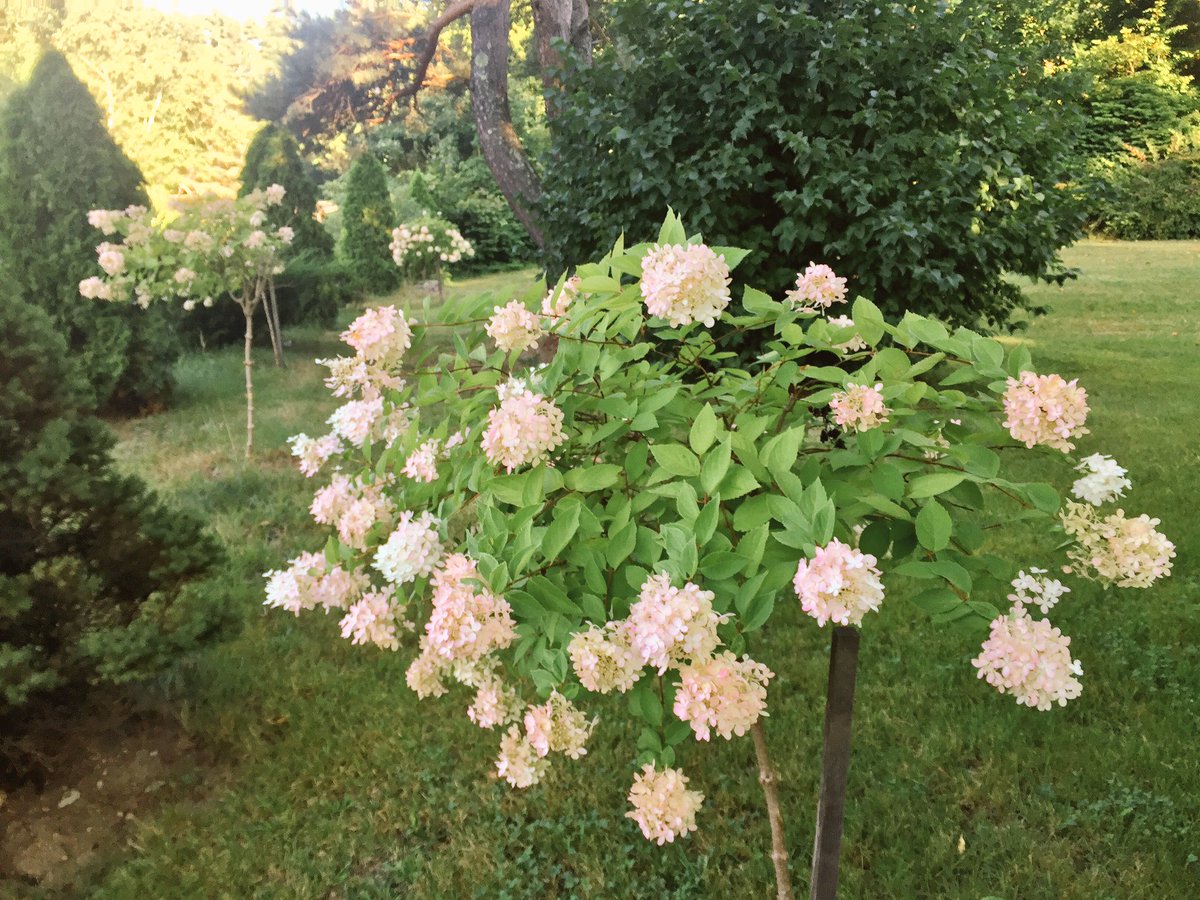
Hydrangeas in later summer bloom.
One of my favorite kinds of flowers is the hydrangea. The ornamental bushes come in many different shapes, sizes, & colors. Lucky for me, I was fortunate & inherited two hydrangea bushes from the previous farm owners. And I’ve augmented those two with an Annabelle specimen and 6 hydrangea paniculata trees (“Strawberries & Cream”).

Ornamental hydrangea trees.
Thankfully, my best friend Heather helped me with finding healthy specimens for planting along the yard facing the road, in contrast to evergreen shrubbery. My aim was to create a welcoming set of blooms to greet passers-by who look towards the farm.

Massive blooms cascade down.
As you may know, the hydrangea paniculata blooms first emerge in a creamy ivory color, then they start to blush, and finally they end with a grand pink flourish. The panicles look gorgeous even dried or used to make a wreath.

The two hydrangea paniculata at the front entrance.
The Annabelle remains white & with large spherical blooms. The white adds great contrast with dark green foliage as a backdrop. This bush sits next to lilacs and roses, in a staggered set of displays.
Many of your common varieties of hydrangea sport blooms that directly reflect the pH of the soil. Violet-blue for acidic & pink to magenta for basic. A periwinkle color is the hue I admire most. Some gardeners amend the soil to achieve desired colors. I haven’t altered the pH of soil for any of the gardens with the exception of the blueberry bushes, as they struggle in basic soil.

The second summer this hydrangea has bloomed out of five years at the farm.
There’s just something happy about hydrangeas.

These turned a lovely rose-tinged color by late fall, as seen in the first image.
The mature bush above is the same as the one pictured first image. As you can see, the blooms are almost a light green to cream. When they age, they pinken. Eventually, they’ll turn a rust color in the height of fall foliage in New Hampshire.

A hydrangea bouquet.
One of amazing things about perennials and sustainable gardening is the opportunity to observe your plants in life cycles. Patterns of blooms become affected by seasonal conditions, water tables, temperatures, insect populations, amount of sunlight, & amendments to soil.
It’s neat to hypothesize about why one season’s blooms might be better than the last. And it’s incredible to watch blossoms age & evolve, season by season, to add interest to one’s landscape.

Hydrangeas look lovely in the fall.

And in the snowy winter.

I love the strawberry and cream hydrangea. I haven’t seen that varietal before. Its so delicate and lovely.
What are your favorites? 🌱
The blues, but when I planted them they bloomed purple pink.
My soil tends to be basic too. If you use spent coffee grinds from your coffee maker at the base of the hydrangea bush, it helps to make the soil more acidic! You can amend the soil to get the blue colors! 😀
Thanks for the advice. 😃 I’ll give it a try.
Beautiful! I love hydrangeas, too. 🙂
Lovely! Thank you for the kind comments! 😀